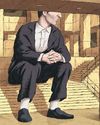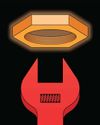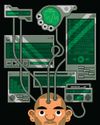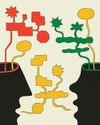
More than fifty years before it was isolated as a drug, Samuel Taylor Coleridge dreamed up cocaine. In the early years of the nineteenth century, the poet was increasingly dependent on opium, a “free-agency-annihilating Poison,” as he called it, which sapped his will and made him despondent. “A Gymnastic Medicine is wanting,” he wrote in his notebook during the winter of 1808-09, “a system of forcing the Will & motive faculties into action.” The medicine he envisaged would be a kind of anti-opium, a tonic to kickstart the nerves, restore the mind’s athletic powers, and repair the broken link between volition and accomplishment. It would be a second, health-giving “poison” to work on the first.
This story is from the April 24 - May 01, 2023 (Double Issue) edition of The New Yorker.
Start your 7-day Magzter GOLD free trial to access thousands of curated premium stories, and 9,000+ magazines and newspapers.
Already a subscriber ? Sign In
This story is from the April 24 - May 01, 2023 (Double Issue) edition of The New Yorker.
Start your 7-day Magzter GOLD free trial to access thousands of curated premium stories, and 9,000+ magazines and newspapers.
Already a subscriber? Sign In

ART OF STONE
\"The Brutalist.\"

MOMMA MIA
Audra McDonald triumphs in \"Gypsy\" on Broadway.

INTERNATIONAL AFFAIRS
\"Black Doves,\" on Netflix.

NATURE STUDIES
Kyle Abraham's “Dear Lord, Make Me Beautiful.”

WHAT GOOD IS MORALITY?
Ask not just where it came from but what it does for us

THE SPOTIFY SYNDROME
What is the world's largest music-streaming platform really costing us?

THE LEPER - LEE CHANGDONG
. . . to survive, to hang on, waiting for the new world to dawn, what can you do but become a leper nobody in the world would deign to touch? - From \"Windy Evening,\" by Kim Seong-dong.

YOU WON'T GET FREE OF IT
Alice Munro's partner sexually abused her daughter. The harm ran through the work and the family.

TALK SENSE
How much sway does our language have over our thinking?

TO THE DETECTIVE INVESTIGATING MY MURDER
Dear Detective, I'm not dead, but a lot of people can't stand me. What I mean is that breathing is not an activity they want me to keep doing. What I mean is, they want to knock me off. My days are numbered.